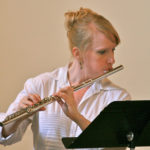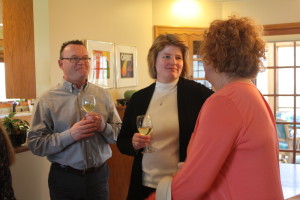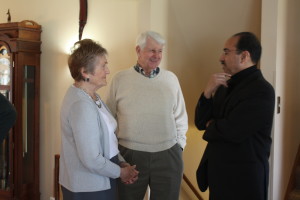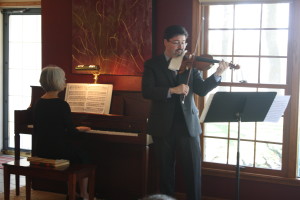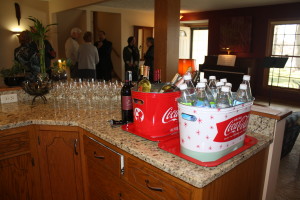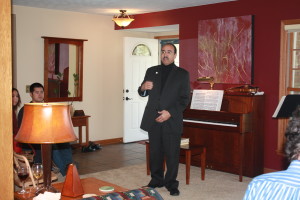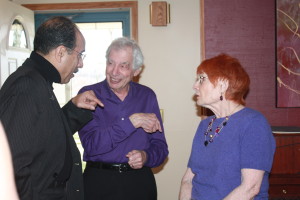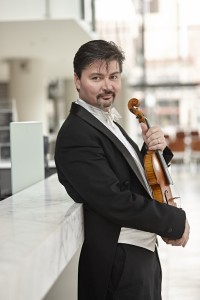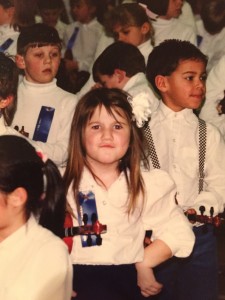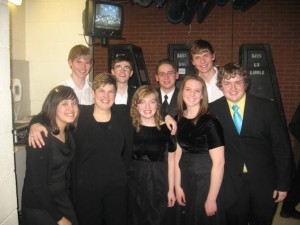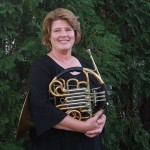This month’s Musician’s Musings was written by BSO Board Member and second horn player, Brian Rule. Read his Musing to learn about how his encounter with a piece of hair metal turned his high school teammates to the beauty of Beethoven.
The Wango Tango. If you are a classical music lover, I wouldn’t be surprised if you had no idea what this song was (nor would I really blame you) but this hair metal band piece is a strange example of promulgation of classical music, whether you believe it or not.
We talk of music and its importance to each of us, but music in my life never existed in a vacuum. I was also engaged heavily in academics (as many musicians are) throughout K-12 and college, and I saw accomplishments in sports that mirrored the ones I had in music, and possibly exceeded my musical endeavors. In my younger years, I was treated to a great deal of music according to my father’s tastes- pop music from the 50’s and 60’s, but also his love for folk music, and I also experienced his adoration of the Boston Pops, as well as an extremely treasured find he came home with one day- a used record of solos by trumpet virutouso Rafael Mendez.
But all things being equal, my interest in classical music was minimal when I had my first chance to play a musical instrument starting in 6th grade. In fact, aside from a few well known pieces, the thought of sitting for a lengthy symphony made me practically queasy. It wasn’t until I had unwittingly landed myself into auditions for the Greater Twin Cities Youth Symphonies that the allure of classical music began to reveal itself to me.
Within a year, classical was all that I listened to, and all other music had lost its appeal. I would rather sit and listen to Handel’s Water Music on a loop than a single hit on mainstream radio. By the time of my sophomore year, I could barely fathom the time before my classical music renaissance any longer, and it was at this point, as I was beginning to hit my stride musically, that I managed to pull myself into our school’s State 200 Medley Relay team as their best (and only) breaststroker.
At meets, I would sit quietly before my main events with a pair of headphones listening to the old hand me down Walkman player my dad had let me use listening to the most inspiring classical music I could find. Favorites included Wagner’s Ride of the Valkyries (of course), the finale to Dvorak’s Ninth Symphony, Shostakovich’s Fifth Symphony and Chopin’s Military Polonaise, but no piece stoked as much flame within me so much as Beethoven’s Fifth Symphony. Everyone knows those opening chords to the symphony, and to be fair, they do and have always caught my attention and drawn me in, unwilling to allow myself to be satiated by only a quick blurb of this iconic work of musical art, but this is not the part that I look forward to most. No, as I sat there at the University of Minnesota Aquatic Center in a side room waiting our turn to swim our relay in a swim off for a chance to compete for the 16th place spot in the finals the next day, I was listening to the third and fourth movements of the piece on loop, and the sensation I got from that symphony was visceral.
How we had gotten there was in itself a story. We were a motley crew of sorts; our butterflier was our top man in the individual medley, who owned a spot on the record board for many years, but who was also a cad who saw himself as a ladies’ man. He once told me when he was accused of egging a well-known teacher’s home who lived two houses down from me, “I didn’t throw a single egg and I never would have, but you can’t blame me for handing them to the other guys in the car as fast as I could.” Our backstroker was a young prodigy of sorts in the water and the youngest of the team, who also owned a place on the record board for a ridiculous amount of time after graduating, and whose advanced talent in the pool was contrasted perfectly by his delayed emotional maturity while our freestyler was the quintessential pretty boy, perfect grades in school as well as a soft mannered jock and all around likeable guy whom I very much looked up to.
And then there was me: scrawny for my age, overly chesty, awkward in every sense of the word and far more of a dork than I care to remember. We had tied the other relay for 16th place going into prelims down to the ten thousandth of a second and now had to face off for the right to make it to the next day. The other team all shaved their heads and disappeared into a group chant on the bleachers opposite our side of the pool. The stands were filled with virtually no one, save the 8 sets of parents, versus bleachers that moments before had been packed with thousands of people, and we, the four of us from Elk River, sat preparing with as much individuality as our varied backgrounds would suggest. Spencer, our team captain and butterflier watched me, listening to a Sony Discman when his curiosity got the better of him.
Whatever I was listening to, it was having an effect on me, and he wanted to know what it was, so he cut a deal with me- if I’d listen to his music, he’d listen to mine. Worried it was some kind of cruel setup, I cautiously applied his headphones, and he mine and my eyes nearly fell out of their sockets as the earphones lit my ears up at full volume “ALRIGHT! IT’S ZEE WANGO, ZEE TANGO!” The music was odd, too loud and left me speechless, but strangely I couldn’t quite hit the stop button. Meanwhile, Spencer was lost in the rapture of Beethoven, stopping after a moment to tell me “holy ****, this is intense!”
The exchange caught the attention of our coaches and team mates, who also were too curious to let my motivational music slide by without a listen as well. The consensus? Definitely Beethoven.
Behind the blocks, we stood, each stretching and shaking our limbs loose while our opponents stood as a group egging each other on to greater and greater levels of impetus. Their coaches chanted and hollered to their athletes, and they were unified in one purpose and mission. On our side, Coach Eidem stood with Spencer’s Discman, banging her head to Wango Tango, while Doesken contemplated Beethoven, and our respective parents attempted to fill the empty aquatorium with their screams.
“Take your mark! BEEP!!” and the race was on, and we were on fire. As the last man of the other team slammed into the wall, he looked up at the board and immediately caught his time. He marveled at the fact that after a long, hard day of competing, they had managed to cut their time a half second from their original swim.
“That’s great,” his coach derided, “but they dropped 4 seconds.” Had we managed that same feat earlier in the day, we would have been solidly in 5th place, instead of 16th, but then, it didn’t matter. We were going to finals, which was a first for all but one of us. The school record we set that day also lasted for many years, though I was equally proud to see the new names replace it when the time came. But even if their time was faster, I stand firm in the knowledge that the magic of their swim didn’t compare to ours.
And Spencer? Before he graduated, he’d occasionally come to me to share new classical music he’d discovered and to ask about what else I had to share, and word spread among the rest of the swim team. When I wasn’t sitting prepping for a race myself, others wanted to borrow what I had to inspire themselves, and the results were equally as magical.
Wango Tango still brings back fond memories, but the Beethoven? To this day it still makes me rocket from wherever I may be standing.
For those who are curious, we leave you with this:


